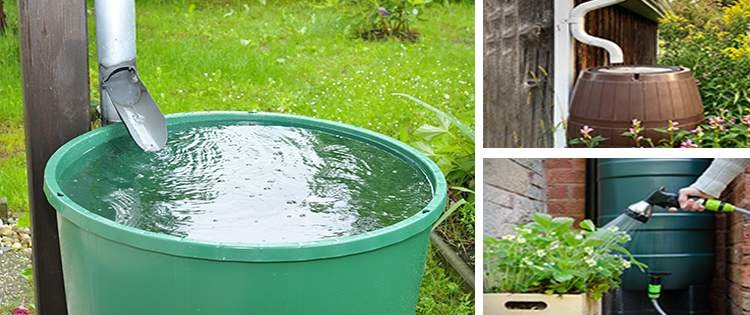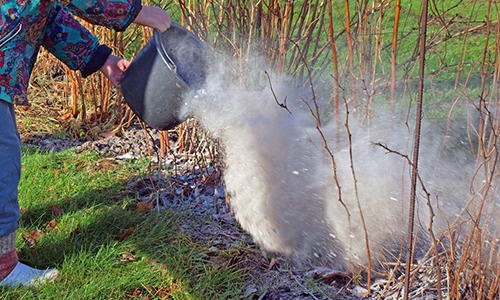Rosemary is a fragrant, woody shrub that has been used in traditional medicine and cookery for generations. Rosemary, known for its adaptability, may be used to flavor everything from roasted meats to soups and stews. But did you know that rosemary is also high in antioxidants and anti-inflammatory substances, which can help your health in a variety of ways?
In this guide, we’ll look at the various health advantages of rosemary and walk you through the steps of growing and harvesting this lovely herb right in your own backyard. Whether you’re a seasoned gardener or just getting started, you’ll learn all you need to know to grow healthy, growing rosemary plants and utilize them to enrich your garden.
A Brief History
Rosemary has a long and storied history as a culinary herb.
Its use dates back to Ancient Greece where it was used not only for flavoring dishes but also for its medicinal properties. Ancient Romans also used rosemary for medicinal purposes, and during the Middle Ages it was widely used as a symbol of remembrance and fidelity. In more modern times, rosemary has become popular in many cuisines around the world due to its unique flavor and aroma.
Rosemary is a member of the mint family and is native to the Mediterranean region. It is an evergreen shrub that grows up to eight feet tall and can be grown in containers or in the ground. It is a hardy plant that can tolerate periods of drought as well as some frost. Rosemary prefers full sun and well-drained soil with a neutral pH level.
Rosemary is known for its distinctive flavor that can be used in a variety of dishes, from savory dishes like roasts and stews to sweet treats like cakes and cookies. Its leaves can be added fresh or dried, and the woody stems can be used for skewers or grilled vegetables. The flowers of the rosemary plant can also be edible and make a beautiful garnish for dishes.
In addition to its culinary uses, Rosemary has been used for centuries for its medicinal benefits. It has been shown to have anti-inflammatory, antiseptic, antioxidant, anti-fungal and anti-bacterial properties. Rosemary has been known to improve digestion, reduce anxiety, stimulate circulation, relieve muscle pain, aid memory retention and even help with hair growth!
Nutritional Benefits
Rosemary is an aromatic herb that is rich in nutrients and can offer a variety of health benefits. The herb is packed with vitamins such as A, C, and B-6, as well as iron and other essential minerals. Studies have also shown that the carnosic and rosmarinic acids in rosemary have powerful antibacterial, antiviral, and antifungal properties.
In addition to its medicinal properties, rosemary can also be a great source of nutrition. It contains dietary fiber, protein, calcium, magnesium, phosphorous, potassium and vitamin B6. Rosemary also contains a variety of beneficial antioxidants, including rosmarinic acid, carnosic acid, caffeic acid and ursolic acid.
Rosemary has been linked to improved brain health. Research suggests that the scent of rosemary may help improve memory and concentration. It has also been suggested that antioxidants in rosemary may help protect against neurological damage caused by free radicals.
One of the key nutrients found in rosemary is iron. Iron helps to make hemoglobin which carries oxygen throughout the body and is important for energy production. This makes it especially beneficial for athletes who require a lot of energy during their exercise routine.
Rosemary is also a rich source of vitamin B6 which helps to support healthy immune function. Vitamin B6 plays an important role in the production of red blood cells and helps to maintain healthy skin cells. It also helps to regulate hormones and can help to reduce stress levels.
By growing your own rosemary at home you can take advantage of these nutritional benefits and enjoy the pleasant aroma of this wonderful herb throughout your home! When growing rosemary you should look for an organic fertilizer with a high nitrogen content to ensure strong growth and healthy yields. And be sure to water your plants regularly but not excessively; rosemary is relatively drought-resistant but needs plenty of water for optimal growth.
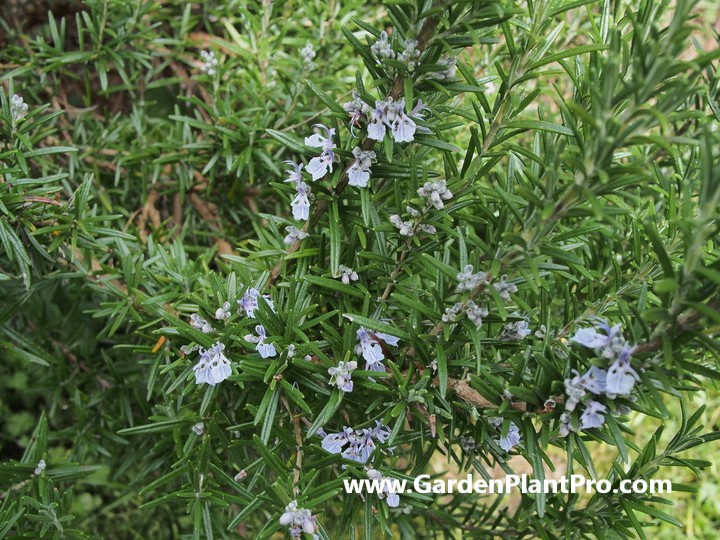
Common Varieties & Their Uses
Rosemary is a hardy, evergreen herb that is native to the Mediterranean region. It is widely cultivated for its culinary, medicinal, and ornamental uses. There are many different varieties to choose from, each with its own unique characteristics.
When choosing a variety for your garden, consider your needs and the environment in which you are growing it. Some varieties are better suited for certain climates or soil types than others.
For example, prostrate varieties such as ‘Corsican’ or ‘Irene’ work best in dry, rocky soils while upright varieties such as ‘Miss Jessopp’s Upright’ are more suitable for wetter soils.
For culinary purposes, ‘Tuscan Blue’ is an excellent choice as it has an intense flavor and strong aroma that is well suited for savory dishes. If you are looking for a variety to use in teas and other medicinal preparations, then consider ‘Albiflora’, which has a milder flavor but more potent medicinal properties.
For ornamental purposes, there are several dwarf or compact varieties that make wonderful ground covers or borders. These include ‘Corsican’, ‘Golden Rain’, ‘Barbeque’, and ‘Arp’. These varieties can also be used in containers, hanging baskets, and window boxes to bring color and texture to your home garden.
No matter what variety you choose, it is important to give it plenty of sun and well-drained soil. Rosemary plants also benefit from regular fertilizing during the growing season and occasional pruning to promote bushy growth and dense foliage. With proper care, these versatile shrubs will reward you with years of beauty and flavor!
When To Sow
The best time to sow rosemary is in the spring or autumn. It is important to note that although rosemary is frost-hardy, the combination of cold and waterlogging can kill immature plants. Therefore, it is important to choose a location where they receive six to eight hours of direct sunlight and have well-draining soil.
DIY PROJECT: Collect rainwater no matter where you live...
This DIY project is the best way to legally collect rainwater NO MATTER where you live. Get chlorine-free water, cut down on your water bills, and have enough for an emergency situation or to water your garden. Read More Here...
When sowing seeds, it is important to soak them just before planting for 2-3 hours. This will help them to germinate quickly and evenly. Once the seeds are ready, they should be sowed in well-drained soil and gently firmed down. It is also beneficial to form a raised ring around the plant, creating a well so that water will go where it is needed.
Choose The Right Location
When it comes to choosing the right location for growing rosemary, it’s important to consider the plant’s needs. Rosemary prefers full sun and protection from cold winds, as well as good air circulation in humid areas.
It should be planted in well-drained soil, so make sure no taller trees or shrubs in the area are too close. Terra cotta pots are a good choice for containers, as rosemary prefers to remain somewhat on the dry side.
When transplanting rosemary outdoors, move the plants to a larger container or garden bed with compost-rich soil. Make sure to provide plenty of light and air circulation. If you plant your rosemary in soggy soil, it will fail to thrive or even die due to wet roots during winter. Therefore, it is important to prepare the soil properly before planting and ensure that it provides adequate drainage.
It is also important to note that rosemary should be planted in spring when temperatures are warmer and there is sufficient sunlight for the plant to grow. Planting too early can lead to stunted growth and poor flowering.
By considering these factors when selecting a location for your rosemary plants, you can ensure they will have the best chance at healthy growth and be able to produce an abundance of delicious leaves for your culinary creations.
Prepare The Soil
Preparing the soil for planting rosemary is essential for successful growth.
Before you start growing rosemary, it’s important to make sure that your soil is nutrient-rich and well-draining. Rosemary thrives in well-draining soil that is slightly alkaline with a pH between 6.0 and 7.0. If your soil is heavy and clay-like, you’ll need to improve its drainage by adding coarse sand or perlite. On the other hand, if your soil is too acidic, you can add lime or wood ash to raise its pH level.
To prepare your soil, start by removing any weeds or debris and breaking up any clumps of dirt. Then, add a layer of organic matter such as compost, leaf mold, or well-rotted manure to the top of the soil. Work the organic matter into the top 6-8 inches of soil using a garden fork or tiller, being careful not to compact the soil. This will help to improve the texture and fertility of the soil, providing a rich environment for your rosemary plants to grow.
Once you’ve prepared the soil, it’s time to plant your rosemary seedlings or cuttings. Gently dig a hole that’s slightly larger than the root ball of your plant, and place the plant in the hole, making sure the top of the root ball is level with the surface of the soil. Press the soil gently around the plant, and water thoroughly.
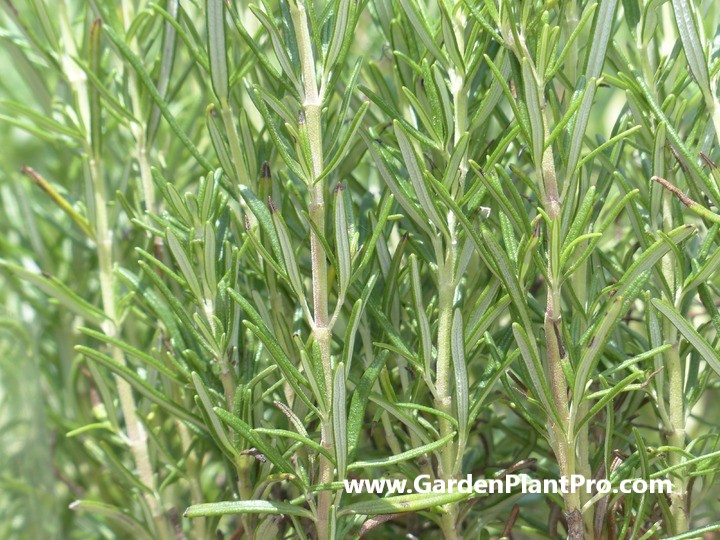
Plant The Seeds, Seedlings Or Cuttings
Planting rosemary is easy when done with seeds, seedlings, or cuttings.
For those beginning with seeds, it is best to cold stratify the seeds before planting. This process can be done by wrapping the seeds in a damp paper towel and placing it in a sealed plastic bag. The bag should then be placed in the refrigerator for at least two weeks. After that, the seeds can be sown in a very sandy potting mix – a 2:1 mixture of sand and peat moss or coco coir is ideal. A sun-facing window is ideal for indoor growth, and grow lights are often necessary to provide supplemental light.
When planting from seedlings, simply pot them on or plant them outdoors when the weather is warm enough. It is important to amend the soil with worm castings or compost and make sure it is well-draining before planting. Additionally, it is important to harden off your seedlings first before transferring them outdoors.
Finally, for those planting from cuttings, use sharp scissors and snip the rosemary stem about 5 to 6-inches back from a fresh growing tip. Cut plenty of extra stems in case some fail. Rosemary cuttings that will be used to propagate new plants are best taken in late spring through to summer while the shoots are still springy and succulent.
Place the cuttings in pots filled with damp sand or vermiculite and keep them moist until you see roots beginning to form at the bottom of the pot. Once they have rooted, they can be planted out as desired.
Watering
Watering is an essential part of caring for rosemary plants.
Rosemary prefers soil on the dry side, but it should be watered every few days if there is no rain. Indoors, let the soil dry out slightly before watering.
Do you have some charcoal in your house right now? We call charcoal a “miracle leftover” for anyone who wants to be a little more self-sufficient and cut costs. That’s because it can help you with so many different things around the house and garden. You can even use it to make an energy-free fridge. Read More Here...
A good rule of thumb is to water when the top of the soil has dried out, but never let all the soil dry out completely. As rosemary is a drought-resistant herb, it is important that you don’t let the soil dry out completely.
Rosemary should be planted in spring or autumn. When planting, it is important to remember that rosemary is frost-hardy, but the combination of cold and waterlogging can kill immature plants. Make sure you provide your rosemary with adequate irrigation during very dry periods to ensure optimum growth and health.
When watering rosemary plants, it is important to avoid overwatering as this can cause root rot. Indoors, water your plant’s soil every two weeks (if the soil is dry), but always keep water in the drainage pan with the rocks in it. Outside, make sure to water when the top of the soil has dried out. When watering outdoor plants, provide them with a generous amount of lukewarm water to ensure optimal growth and health.
By following these tips for watering your rosemary plants, you can ensure that your plants stay healthy and thrive in their environment. With proper care and maintenance, you can enjoy fresh and flavorful rosemary for many years to come.
Fertilizing
Fertilizing is an important part of the rosemary growing process and is essential for healthy, lush plants. During the spring and summer growing season, savvy gardeners fertilize rosemary with weekly applications of a high nitrogen formula organic fertilizer.
For outdoor container cultivation of rosemary, apply organic 20-20-20 non-acidic liquid fertilizer to your rosemary every other week, preferably during the early morning or late evening hours. Organic growers may also add 15-20 tons of well-rotted manure per hectare and plow well before they transplant the young plants. This organic rosemary fertilization can be repeated every year by applying 5 to 10 tons per hectare.
Rosemary rarely needs fertilizer unless your soil has been depleted or the pH is too high. The best time to apply extra fertilizer is in spring before the herb starts growing in earnest. Keep the substrate moist so that the granules can loosen and break down into the soil.
Rosemary in pots generally doesn’t require fertilizer, but you can use a dry fertilizer or a dilute solution of a water-soluble liquid fertilizer to give your plants a boost.
When fertilizing, it’s important to take into account your location, soil type, climate, and variety of rosemary being grown. Be sure to follow directions on the packaging and only apply as much as recommended by the manufacturer. Too much fertilizer can cause nutrient burn and damage your plants, so it’s best to err on the side of caution when applying it.
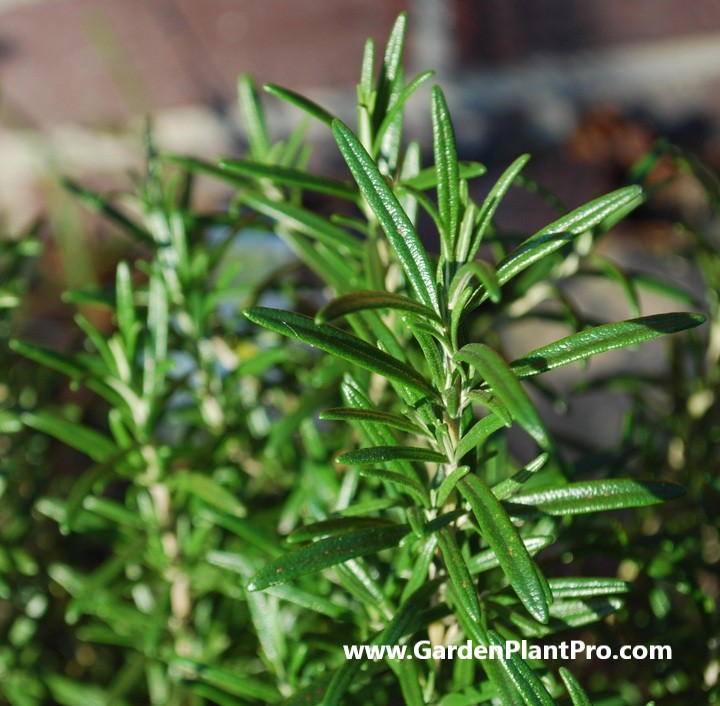
When & How To Harvest
Harvesting rosemary is an important part of growing and caring for the herb. It can be used for culinary dishes as well as medicinal remedies, so it is important to know when and how to harvest rosemary in order to get the most out of your plants.
When it comes to harvesting rosemary, timing is key. The best time to harvest is just before the plant flowers, when the oils are at their peak. To do this, look for 4-6 inch sprigs from the tips of the branches and cut them with a garden pruner or sharp kitchen scissors.
Also, avoid harvesting more than one-third of the plant at once. This will ensure that the plant can regrow and replenish its oils over time. If you want to harvest more than this, cut in sections over a few weeks or months.
When it comes to indoor plants, you can harvest as needed but make sure that you don’t take too much from one plant. If you have multiple plants indoors, you can rotate them so that each plant can replenish its oils before being harvested again.
Once harvested, it’s important to store rosemary correctly in order to maintain its freshness and potency. To do this, wrap the sprigs in a damp paper towel and store them in an airtight container in the refrigerator. Alternatively, you can dry your rosemary by hanging it upside down in a warm room with good air circulation until it’s completely dry.
Storing & Preserving
Storing and preserving rosemary is an important step in making sure that your plants remain useful and fragrant year-round. There are a variety of ways to store and preserve rosemary, allowing you to make the most out of your harvest.
One of the most common ways to store rosemary is by freezing the sprigs or leaves. To do this, lay them out in a single layer on a parchment paper-lined baking sheet and then place it in the freezer for an hour. Once frozen, strip off the leaves and store them in an airtight container in the freezer for later use.
Drying is also an option for preserving rosemary. Strip the leaves from the stems and store them in an airtight container. You can also crush or grind them in a pestle and mortar for later use as a seasoning for your dishes.
CASE STUDY: We've been living off the grid for the last 40 years...
In all that time an electric wire has never been connected to our house. We haven’t gotten or paid an electricity bill in over 40 years, but we have all the electricity we want. We grow everything we need, here, in our small backyard. We also have a small medicinal garden for tough times. Read More Here...
When stored properly, fresh rosemary can last up to two weeks if kept refrigerated. If you would like to keep it for longer, freezing is a great option. If you plan on using fresh rosemary more often, try planting several plants so that you have a steady supply of herbs throughout the year.
To make sure that your plants remain healthy and vibrant, it’s important to provide them with adequate water and nutrition. Water deeply twice a week depending on weather conditions, but make sure to keep mulch away from the trunk. Additionally, fertilize with compost or organic fertilizer every few months throughout the growing season to ensure good health and abundant harvests.
Common Diseases & How To Control Them
Rosemary is a resilient and fragrant herb, with culinary, medicinal and ornamental uses. It is a popular herb to grow in the home garden, and with the correct care, it will thrive for many years.
Unfortunately, rosemary is susceptible to various diseases that can damage the plant and reduce its lifespan. In this section, we will look at some of the most common diseases affecting rosemary plants, and how to control them.
Powdery Mildew
Powdery mildew is one of the most common diseases of rosemary plants. It appears as a white powdery substance on leaves and stems, and causes leaves to curl or distort. To control powdery mildew, you should try to keep the foliage dry by avoiding overhead watering. You can also prune the affected parts of the plant to reduce the spread of infection. If symptoms persist, you can use an organic fungicide such as neem oil or potassium bicarbonate to help control the infection.
Root Rot
Rosemary plants are vulnerable to root rot when planted in areas with poor drainage or overly wet soil conditions. Symptoms include yellowing of leaves, wilting and stunted growth. To prevent root rot, it is important to ensure that your soil has adequate drainage and avoid overwatering your rosemary plants. If your plants have already become infected with root rot, you can try removing affected roots or repotting in fresh soil with good drainage.
Cercospora Leaf Spot
Cercospora leaf spot is caused by a fungus which infects leaves creating small dark spots on their surfaces. The spots can expand in size until they join together forming larger patches which can cause leaves to drop off prematurely. To control this disease you should remove any affected leaves and prune away any infected stems or branches. You should also water in the morning to allow foliage to dry out quickly after watering and avoid overcrowding rosemary plants when planting in a garden bed or pot.
Common Pests & How To Control Them
Common pests can be a problem when growing rosemary at home. Whiteflies, aphids, and fungus gnats are the most common pests that attack rosemary plants. To get rid of them, wash whiteflies off crops with a quick stream of water and encourage predators to get rid of them naturally. You can also use insecticides, but be sure to read the label first and follow all instructions carefully.
Aphids can be removed by spraying the plants with a stream of water or by rubbing them off with a damp cloth or paper towel. You may also choose to use insecticidal soap or neem oil to control aphid populations. Again, be sure to read the label first and follow all instructions carefully when using these products.
Fungus gnats may hang around soil that’s too wet. To control these pests, allow soil to dry out between waterings and avoid overwatering your plants. Use yellow sticky traps to trap adult fungus gnats, and release beneficial nematodes into the soil where they will feed on the eggs and larvae of the gnats.
Companion Planting
When considering companion planting with rosemary, there are several options to choose from. Planting herbs, vegetables, and certain flowers nearby can help to ensure a successful crop.
Thyme is an ideal companion to rosemary, as both plants require similar growing conditions and are drought-tolerant herbs. Sage is another great option for companion planting with rosemary because both plants thrive when planted together. Marigolds, strawberries, nasturtiums, and other flowers also make great companion plants for rosemary. Additionally, vegetables from the brassica family such as French beans, carrots and onions are excellent companions for rosemary.
When planting companion plants near rosemary, it is important to remember that the herb requires dry soil and plenty of sunlight. Rosemary should not be planted too close to overly moist plants such as lettuces or cabbage as this will cause the rosemary to rot. Additionally, it is best to avoid planting mint near rosemary as this can crowd out the herb’s growth.
To maximize the benefits of companion planting with rosemary, it is important to keep the soil healthy by adding compost or mulch once a year and regularly weeding around the plant. Additionally, it is important to harvest herbs frequently in order to ensure they stay healthy and strong.
inally, remember that when planting companion plants near rosemary they should be spaced adequately so they have enough room to grow without competing with one another for resources. With some thoughtful planning and care, companion planting with rosemary can result in a bountiful harvest of herbs throughout the growing season.
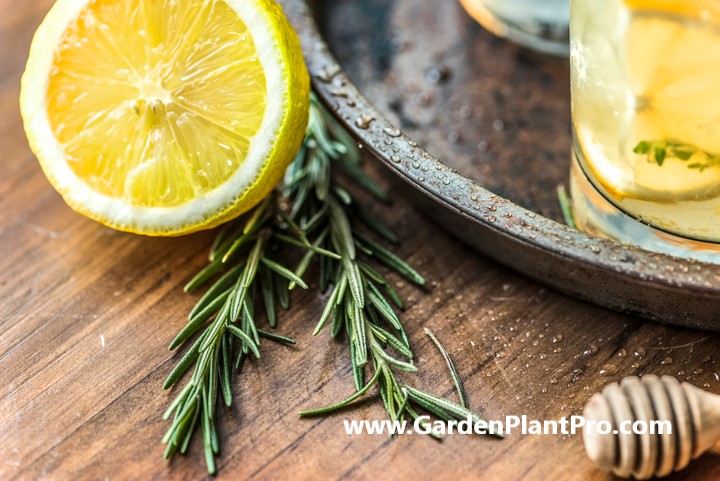
Using In Your Cooking
Using rosemary in your cooking can add extra flavor to many dishes. It is an aromatic and flavorful herb that can be used fresh or dried.
When harvesting rosemary, it’s best to clip off stems when they are still tender and young. Fresh rosemary can be used in savory dishes, such as soups, stews, sauces, and marinades. Dried rosemary is often used in baking and as a garnish for dishes like roasted vegetables, meats, and fish. Rosemary also pairs well with other herbs such as thyme, oregano, basil and garlic.
When using fresh rosemary in cooking, it’s best to chop the leaves finely to ensure even distribution of flavor throughout the dish. Rosemary adds a woody flavor to many dishes and its strong flavor should be balanced with other herbs or ingredients. When using dried rosemary, it’s best to add it early in the cooking process since it will take longer for the flavors to develop.
Rosemary is also a great addition to homemade marinades and dressings. To make a simple vinaigrette dressing, combine equal parts olive oil and white wine vinegar with freshly chopped rosemary leaves and a pinch of salt. This mix can be stored in an airtight container for up to one week in the refrigerator.
Rosemary can also be used to infuse oils or vinegars with its flavor or used as a garnish on top of dishes after they have been cooked. Finally, rosemary sprigs can also be added to boiling water for an herbal tea infusion or added directly into soups and stews for extra flavor.


